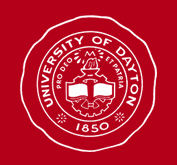Abstract
It has become a virtually established doctrine among both literary and religious scholars that myth and ritual are one and the same thing, the apparent difference between them deriving from the disjunctive power of an analytic mind beholding an originally organic and unitary phenomenon. Efforts to effect a real distinction between myth and rite are therefore declared to be fallacious. whether these arise from an attempt to assign a chronological priority to one or the other. or to apprehend either in an isolated and truly distinctive form. In Christian theological terms. this doctrine would appear to have a Catholic form. for it seemingly assaults both the meaningfulness and the validity of the claim of classical Protestantism to be grounded in sola scriptura. and this because it denies the possibility of a sacred scripture that could be divorced from the authority and the cultic acts of the religious community or the Church. At the same time it also assaults all critical attempts to distinguish between the roles of myth and ritual in literature. whether these seek to understand the origin of literature by way of the advent of an historical disjunction between myth and rite. or whether they seek to interpret particular works of literature in terms of the distinctive roles of myth and rite. Nevertheless. the fact remains that myth has ever increasingly become a dominant category in much modern thinking and understanding. whereas the analysis of ritual is largely confined to the work of the anthropologist and the psychoanalyst. Few literary critics or theologians have occupied themselves with the study of ritual. whereas theological and literary studies have become almost indissolubly related to the study of myth. Yet. in our time. a ritual theatre is being reborn in our midst and many modern literary movements from surrealism to the new novel and concrete poetry appear to have a cultic or ritual as opposed to a mythical identity. Indeed. rite. or the primal religious act. has ever more fully become manifest to us as that form or expression of religion which embodies religious passion and power in its most naked and immediate form. Who knows if the man has yet been born who is liberated from the power of rite? The example of Confucius should be a lesson to all. for in reducing religion to rite he established the most long-lived religious tradition in history. and one that may well have been reborn in Maoism.
Recommended Citation
Altizer, Thomas J. J.
(1980)
"Literature and Rite,"
University of Dayton Review: Vol. 14:
No.
3, Article 6.
Available at:
https://ecommons.udayton.edu/udr/vol14/iss3/6


